Any Questions? Call: +86 (188) 168 93266
| Chinese Name: | 北京市 |
| Area (City): | 4,000 square km |
| Area (Metro): | 6,341 square km |
| Population: | 24.18 million (2017) |
| Coordinates: | 31°13′-43″N 121°28’29″E |
| January Average Temperature: | 4.8°C (40.6°F) |
| July Average Temperature: | 28.6°C (8°F) |
| Average Elevation: | 4 meters |
| Phone Area Code: | 21 |
| Postal Code: | 200000 – 202100 |
| Time Zone: | CST (UTC+8) |
| Website: | http://shanghai.gov.cn |

Shanghai could be considered as the most developed metropolis in Mainland China. It’s a very large city and with its 24 million population is one the most populated cities on our planet. This metropolis is among the four municipalities which are under the direct administration of the central government of the People’s Republic of China. The city is in the Yangtze River Delta and is located on the south part of the estuary of the Yangtze in the middle section of the Eastern China coast. The city reaches the East China Sea on its eastern border and has borders with Jiangsu and Zhejiang provinces in the south, east and west. Shanghai main attractions are listed below:
Shanghai is a global financial center and also a transport hub owning the world’s busiest container port. It is a major administrative, a shipping and trading city which its importance started in the 19th century because of the trade and recognition of its port location and economic potential.
After the First Opium War with the British and losing the war, This city was selected as one of the five treaty ports open to the foreigners by force. This matter alongside the 1842 Treaty of Nanking and the 1844 Treaty of Whampoa led to the French Concession and establishment of the Shanghai International Settlement.

This city development was around commercial trade between China and the rest of the world and became the main financial hub of the Asia-Pacific region in the 1930s. The City experienced the Battle of Shanghai during WWII.
During World War II, the city was the site of the major Battle of Shanghai. After the end of WWII, the Communist Party armed forces, the People’s Liberation Army took China. This led to the city’s decline of global influence mainly because of the trade limitation with socialist countries. During the 1990s, Deng Xiaoping introduced economic reforms which led to an extreme re-development of Shanghai. This made the foreign investment and finance once again available to the city.
Since then, the city has become once again a hub for international trade and finance. Shanghai also owns one of the largest stock markets in the world, the Shanghai Stock Exchange. This is why this city is one of the most prominent examples of Chinese economic power sources. The city is also known for its museums and historic buildings especially the ones located in The Bund and also City God Temple and Yu Garden. Lujiazui skyline is another important highlight of this metropolis.
If you see the translation of the two Chinese characters in the city name, it would literally mean “Upon-the-Sea”. During the Song Dynasty in the 11th century, there was a river and a town with the name but Chinese historians declare that during the Tang Dynasty, the city had been literally on the sea.
The city has had different names in Chinese including, Hù Dú Vu Doh (Harpoon Ditch), Shēnchéng (Shen City) and Huating. Shanghai has also different nicknames in English, such as “Paris of the East” and “Pearl of the Orient”.
Sitting on China’s east coast, Shanghai is nearly equidistant from Beijing and Guangzhou. The city is now located between Hangzhou Bay to the south and the Yangtze River Delta to the north, in the center of a growing peninsula which is formed by Yangtze River’s natural deposition and modern land reclamation processes.
This land is surrounded from the east by the East China Sea, from the south by Zhejiang, and from north and west by Jiangsu.
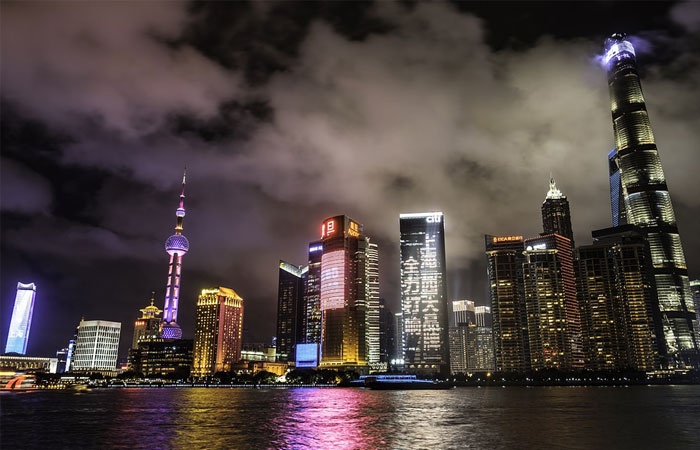
The most northern point is Chongming Island which after its expansion in the 20th century, has earned the title, second largest island in China. Today, Shanghai has deep waters and is an excellent port city for the trade of the container ships, this matter has happened by the high traffic of the ships and also the siltation of Yangtze River.
Huangpu River which is a man-made tribute created by order of Lord Chunshen in the Warring States time period has divided downtown Shanghai. On Huangpu west bank or Puxi, close to the mouth of Suzhou Creek the historic center of Shanghai is located which connects it with Lake Tai and Grand Canal. The renowned financial district Lujiazui has developed on the Huangpu east bank or Pudong.
Shanghai is mostly flat and its average elevation is four meters. Because of its sandy soil, the skyscrapers have to dig very deep for concrete foundations to not sink into the soft sandy ground of the central area.
There are a few hills in the area, for example, the She Shan which lies on the southwestern part and the highest point of it is the Peak of Dajinshan Island in Hangzhou Bay that is only 103 meters. Shanghai has many rivers, canals, streams and lakes inside and is famous for the rich water resources it owns such as part of the Lake Tai drainage area.
Although Shanghai is a gigantic city, it is equal to a province in administrative term and therefore, is divided into 16 county-level districts. The main city center is Huaihai Road and Old City Temple to the south, Nanjing Road to the north, and the famous Bund to the east but every district has also its urban core too.
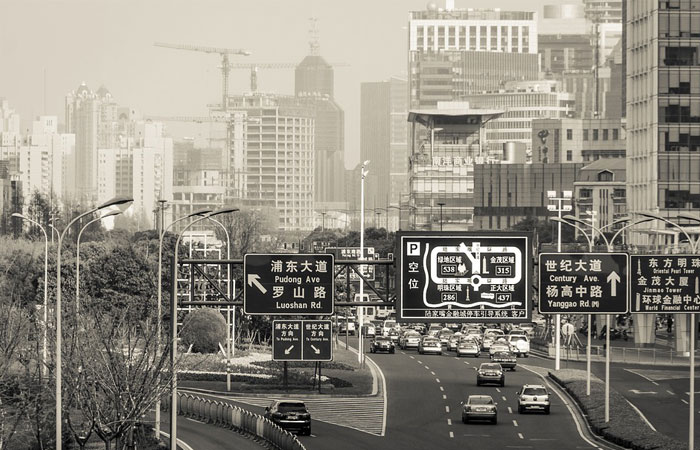
Shanghai’s distinguished business centers are located on sides of the Huangpu River, The Bund and Hongqiao areas on the west bank and Lujiazui on the east bank. Huangpu District is the home to the city hall and major administration units and also commercial areas such as Xintiandi and the classy Huaihai Road. The famous Nanjing Road is also located here. There are some other important commercial areas such as Xujiahui in Xuhui District too. Yangpu District and Putuo District of Shanghai although are mostly residential areas but also has many universities inside.
Puxi (West of the River Pu) is governed by seven districts, Huangpu, Xuhui, Changning, Jing’an, Putuo, Hongkou, and Yangpu. That is the older part of Shanghai located on the west bank of Huangpu River and is mostly called Shanghai Proper. Pudong (East of the River Pu) is governed by Pudong New Area. That is located on the east bank of the Huangpu River and is the newer part of urban and suburban Shanghai. The suburbs, satellite towns, and rural areas are governed by Seven of the districts, Baoshan, Minhang, Jiading, Jinshan, Songjiang, Qingpu, and Fengxian. Chongming district includes the islands of Changxing and Hengsha and most parts of Chongming Island.
Because of its location, Shanghai has a humid subtropical climate and four distinct seasons happens every year. The summers are humid and hot, with an average of 8.7 days surpassing 35 °C (95 °F) annually. Also sometimes the city experiences freak thunderstorms or downpours.

Shanghai is open to typhoons in summer until the beginning of autumn. These typhoons have not caused considerable damage recently. The winters in Shanghai are damp and chilly and the winds from Siberia coming from the northwest sometimes make the night temperatures to drop below freezing. Shanghai usually experiences only one or two snowy days.
Shanghai is one of the least polluted major cities in China, although the degree of pollution might be more severe when using international comparisons. For this reason, coupled with a lesser degree of focus placed on national politics, visitors will find a much different experience than visiting Beijing.
Shanghai has inside itself 157 parks, with 138 of them free of charge as stated in 2012. Many parks of Shanghai are located near city landmark and hence, they are very appreciated by the tourists such as central park and People’s Square Park.
Concerns about the environment in Shanghai has grown recently and because of that, the government has moved most of the factories located in the city center to the areas around the city or to other provinces. Also, there has been some budgets dedicated to cleaning different parts of the city including the cleanup of Suzhou Creek.
Shanghai has existed as a village since the Song Dynasty period nearly a thousand years ago but its importance and development only started following the defeat of China in 1842 at the First Opium War. Shanghai alongside four other cities was selected as open to trade and it grew fast after that. Before this, the importance the region was focused on Hangzhou, Suzhou, and Nanjing but today Shanghai is definitely the focus.
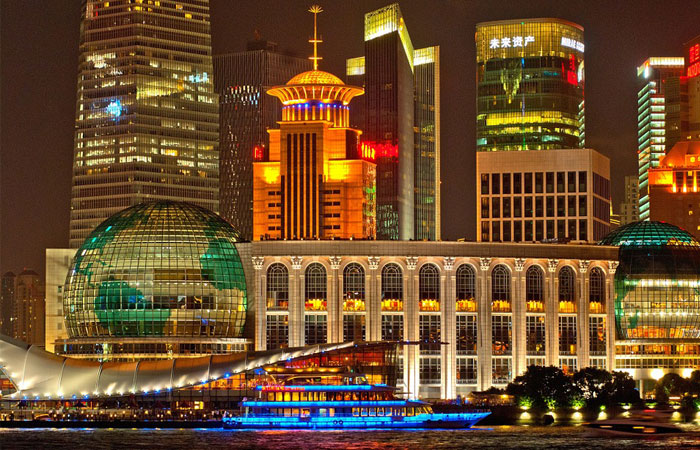
Then the western powers and Japan set foot inside China. United States, United Kingdom, Germany, Russia, Austria-Hungary, France, and Italy alongside Japan, earned concessions in Shanghai. They had areas that they controlled themselves and Chinese law did not apply there.
As the “International Settlement”, most of these were administered jointly except for French that they ran separately. The population in these areas was mainly Chinese natives but the legal system was from the other countries. The law enforcement there included Sikhs and French gendarmes. These areas were based on the northern side of Shanghai and today they are all parts of the today downtown Shanghai.
These areas under the control of foreign powers, all have huge parts of the cityscape of Shanghai. The Bund buildings with British style can be found and in the former French Concession, buildings with French style. People’s Park and its major subway interchange located underneath was a racetrack in the British area. The place where once the American area existed, now is another subway station. Lao Xi Men and Xiao Nan Men, Old West Gate and Small South Gate were two gates of the walled old Chinese city but the wall now is not there anymore, although still a few traditional Chinese-style buildings and Yu Gardens stand there.
The pinnacle of Shanghai happened from 1920 to 1930 and it was considered the time the most flourishing city in East Asia. Despite the flourishing of the city, Chinese triads dominated the city streets and had constant battle to take control of the other parts of Shanghai as well.
This era of Shanghai has been featured in many modern movies and TV series. Hong Kong’s TVB, The Bund which was produces in 1980 is one of the most famous examples. This city also was the main focus of Chinese entertainment during that time and many films and songs were produced there.
The Japanese occupied Shanghai in 1937 just after a battle which lasted for several months. When the war finished the concessions were not reimposed on China and although trade resumed, it was not the same level as of before the war.
Shanghai glorious days were gone temporarily after the Communist victory in the civil war in 1949. This led to the fleeing of a large number of people in the entertainment industry and business to Hong Kong and Taiwan which resulted in the decline of Shanghai for a period as is known now.

In the early 1990s, in order to attract foreign investments, the Shanghai government started a series of new strategies. Opening up the Pudong was the biggest move in this period and changed this rural arena to a large business metropolis. These strategies were successful and Pudong now has become a home to a large number of financial institutions. This area is The Bund, just across the Huangpu River and is home to many skyscrapers in Shanghai and the World Financial Center, which is the third tallest in the world.
Nowadays, Shanghai’s goal for the future is to be a world-class economic and financial center in China and Asia. In order to achieve this goal, this city has to compete with Hong Kong which owns a greater banking and service expertise and a stronger legal system. Nevertheless, Shanghai has stronger relations with the Chinese interior and the central government and also a stronger manufacturing and technology base. Shanghai has increased its focus on banking and finance and has tried to be the perfect destination for companies’ headquarters.
The 2010 census put Shanghai’s total population was at 23,019,148 based on the 2010 census which indicates a growth of 37.53% from 16,737,734 in 2000. Most of this large population which is 20.6 million or 89.3%, reside urban areas and only 2.5 million or 10.7% of them are residing in rural areas. Taking into account all of the administrative areas of Shanghai, it is the second-largest municipality among the four largest cities of China. It is second to Chongqing but Shanghai is considered the largest city only because it has a much denser population in urban areas, unlike Chongqing.
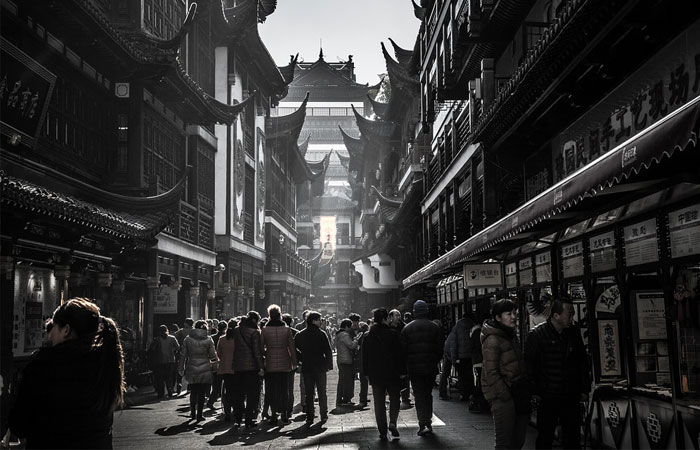
150,000 officially registered foreigners are in Shanghai and among them 31,500 are Japanese, 21,000 are American and 20,700 are Koreans. Because of its many opportunities for work, this city is a domestic immigration city and a large portion of its population are from other cities of China.
A survey in 2012 showed that only around 13% of people in Shanghai belong to organized religion and among them, the largest groups are Buddhists with 10.4%, Protestants with 1.9%, Catholics with 0.7%, and other faiths with 0.1%. A very large population of Shanghai around 87% may be either irreligious or are involved in the worship of nature deities and ancestors, Confucian churches, Taoism and folk religious sects.
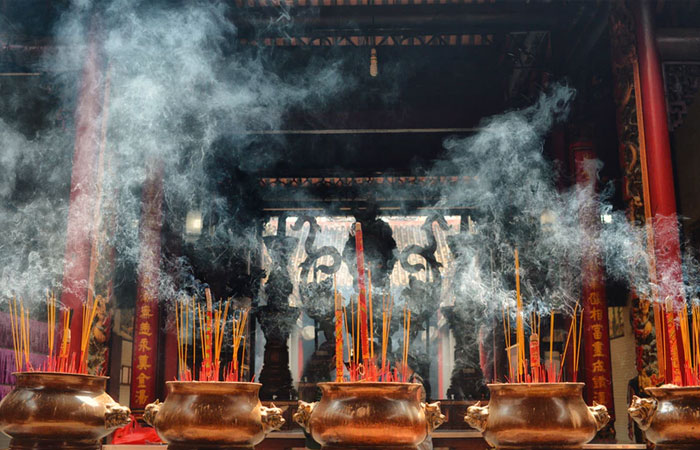
Shanghai has inside itself one of the largest populations of Catholics in China as in 2003. Islam reached Shanghai 700 years ago and in 1295, a mosque was built in Songjiang and centuries later, a teachers’ college was built In 1843.